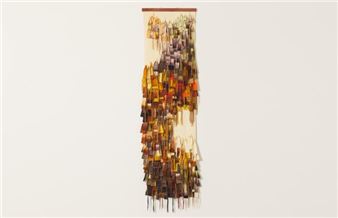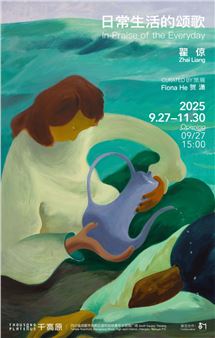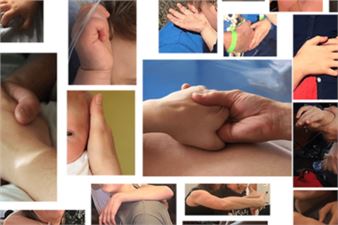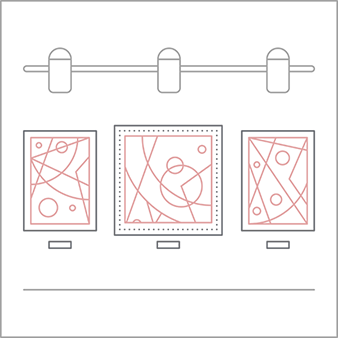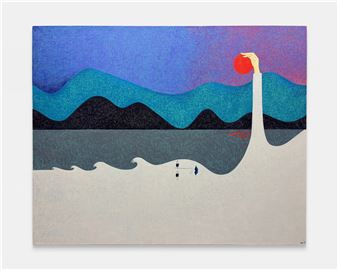Jiang Cheng: Shiver
The Shiver, Jiang ChengвАЩs current solo exhibition with Tara Downs, marks an inflection in the artistвАЩs practice, the culmination of a new body of paintings produced over the past four years. As new entries in JiangвАЩs enduring U-series, these works not only extend the artistвАЩs methodical approach to abstracted forms of portraiture, but also reconsider its conceptual foundations, self-reflexively drawing the seriesвАЩ abiding concerns regarding representation and process into closer proximity with a diverse array of historical lineages.
The exhibition takes its title from a sensation produced through the act of painting, which Jiang describes as a moment of rupture, вАЬthat instant of being startledвАЭ in which controlled fixation on the depicted subject gives way to a more physical and associative approach to the canvas. Toggling between direct observation and haptic intuition generates an estranging effect, one that also comes to encompass the paintingsвАЩ audience. What the artist intuits here is correspondence between his experience of painting and the act of seeing itself, which he perceives as necessarily fragmentary or incomplete. вАЬAt times it feels as though youвАЩve grasped the image and rendered it, but then the painting slips through your fingers and vanishes,вАЭ he has said. вАЬEven when we look at a painting, we cannot discover some complete whole or hidden truth behind the image, because vision never acts alone: looking produces structure, produces identity, produces the distinctions between you, me, and them.вАЭ To stay with the shiver might mean to resist comprehension, to remain in the thresholds between recognition and estrangement, intimacy and distance.
Foregrounding the experiential dimensions of the artistвАЩs work, the exhibition elucidates latent facets of JiangвАЩs long-running U-series. Executed at a large scale, the U-series paintings establish a set of conceptual parameters вАУ each is a portrait labeled U (abbreviated from вАЬyouвАЭ) followed by a number, or in the case of two frequently recurring subjects, titled after the archangels Gabriel and Michael; all biographical information surrounding the depicted subjects is withheld. Evincing evolutions and discoveries in the artistвАЩs practice over time, Jiang will often withhold works in the series until a sense of clarity emerges from a number of works seen in relation to one another. Reflecting such decisions, conventional portraiture is continually deferred, subject to interruptions, stutters, and erasures. Visages emerge only to recede again, while the canvases themselves bear evidence of meandering gestures and halting reversals. Superimpositions reminiscent of Francis PicabiaвАЩs вАЬtransparenciesвАЭ suggest simultaneity and flux, prismatically rendering a multitude of subjects. Many of these canvases are populated by eyes вАУ emblematic of both seeing and being seen вАУ underscoring the reciprocal and even adversarial structures that vision produces.
More recently, the artist has turned to images of faces lit from below, caught in moments of shock or discovery, as though startled by the viewerвАЩs presence or by the illusion of their own presence. In these works, the act of looking becomes fraught, even combative, as the painted figures seem to resist the artistвАЩs gaze and therefore that of the viewerвАЩs. The introduction of this conceit draws the work into conversation with the history of the nocturne in Western painting, reminding us of the nocturnal scenes of Francisco Goya, or, even more closely, those of the seventeenth-century painter Georges de La Tour. вАЬThe nocturnes are suffused by the flames of candles, lanterns, or torches, lending the countenance of fire to faces and hands and making them glow like burning embers in the dark,вАЭ Dalia Judovitz notes in her study Georges de la Tour and the Enigma of the Visible. вАЬHow are these portrayals of illumination to be understood, given the opposition between the theatrical depiction of light, which emphasizes its deceptive character, and its contemplative manifestations, where light functions as a figure for spiritual expression and transformation?вАЭ Strikingly, JudovitzвАЩs question proves equally resonant for JiangвАЩs paintings, which likewise flicker between the visible artifice of their construction and intimations of transcendence.
Yet such seemingly oppositional ambiguities have long been central to JiangвАЩs searching and contemplative practice. For Jiang, painting is inherently animated by its own ambiguity, by the divergences that surface between the artist and viewer, the body and canvas, identity and image, when placed in contention with one another. And it is precisely through these dissonances, these productive moments of irresolution, that the artistвАЩs singular painterly language is born.
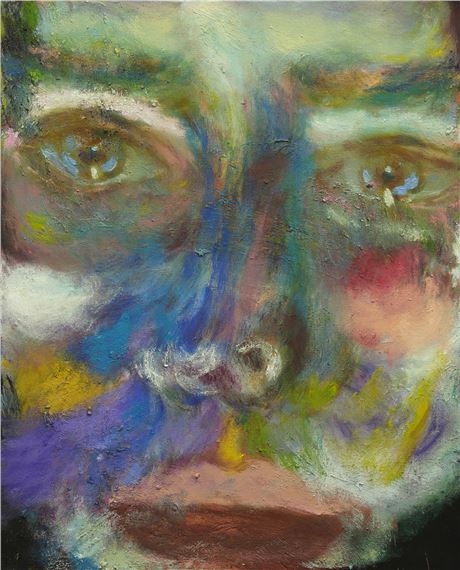
Recommended for you
The Shiver, Jiang ChengвАЩs current solo exhibition with Tara Downs, marks an inflection in the artistвАЩs practice, the culmination of a new body of paintings produced over the past four years. As new entries in JiangвАЩs enduring U-series, these works not only extend the artistвАЩs methodical approach to abstracted forms of portraiture, but also reconsider its conceptual foundations, self-reflexively drawing the seriesвАЩ abiding concerns regarding representation and process into closer proximity with a diverse array of historical lineages.
The exhibition takes its title from a sensation produced through the act of painting, which Jiang describes as a moment of rupture, вАЬthat instant of being startledвАЭ in which controlled fixation on the depicted subject gives way to a more physical and associative approach to the canvas. Toggling between direct observation and haptic intuition generates an estranging effect, one that also comes to encompass the paintingsвАЩ audience. What the artist intuits here is correspondence between his experience of painting and the act of seeing itself, which he perceives as necessarily fragmentary or incomplete. вАЬAt times it feels as though youвАЩve grasped the image and rendered it, but then the painting slips through your fingers and vanishes,вАЭ he has said. вАЬEven when we look at a painting, we cannot discover some complete whole or hidden truth behind the image, because vision never acts alone: looking produces structure, produces identity, produces the distinctions between you, me, and them.вАЭ To stay with the shiver might mean to resist comprehension, to remain in the thresholds between recognition and estrangement, intimacy and distance.
Foregrounding the experiential dimensions of the artistвАЩs work, the exhibition elucidates latent facets of JiangвАЩs long-running U-series. Executed at a large scale, the U-series paintings establish a set of conceptual parameters вАУ each is a portrait labeled U (abbreviated from вАЬyouвАЭ) followed by a number, or in the case of two frequently recurring subjects, titled after the archangels Gabriel and Michael; all biographical information surrounding the depicted subjects is withheld. Evincing evolutions and discoveries in the artistвАЩs practice over time, Jiang will often withhold works in the series until a sense of clarity emerges from a number of works seen in relation to one another. Reflecting such decisions, conventional portraiture is continually deferred, subject to interruptions, stutters, and erasures. Visages emerge only to recede again, while the canvases themselves bear evidence of meandering gestures and halting reversals. Superimpositions reminiscent of Francis PicabiaвАЩs вАЬtransparenciesвАЭ suggest simultaneity and flux, prismatically rendering a multitude of subjects. Many of these canvases are populated by eyes вАУ emblematic of both seeing and being seen вАУ underscoring the reciprocal and even adversarial structures that vision produces.
More recently, the artist has turned to images of faces lit from below, caught in moments of shock or discovery, as though startled by the viewerвАЩs presence or by the illusion of their own presence. In these works, the act of looking becomes fraught, even combative, as the painted figures seem to resist the artistвАЩs gaze and therefore that of the viewerвАЩs. The introduction of this conceit draws the work into conversation with the history of the nocturne in Western painting, reminding us of the nocturnal scenes of Francisco Goya, or, even more closely, those of the seventeenth-century painter Georges de La Tour. вАЬThe nocturnes are suffused by the flames of candles, lanterns, or torches, lending the countenance of fire to faces and hands and making them glow like burning embers in the dark,вАЭ Dalia Judovitz notes in her study Georges de la Tour and the Enigma of the Visible. вАЬHow are these portrayals of illumination to be understood, given the opposition between the theatrical depiction of light, which emphasizes its deceptive character, and its contemplative manifestations, where light functions as a figure for spiritual expression and transformation?вАЭ Strikingly, JudovitzвАЩs question proves equally resonant for JiangвАЩs paintings, which likewise flicker between the visible artifice of their construction and intimations of transcendence.
Yet such seemingly oppositional ambiguities have long been central to JiangвАЩs searching and contemplative practice. For Jiang, painting is inherently animated by its own ambiguity, by the divergences that surface between the artist and viewer, the body and canvas, identity and image, when placed in contention with one another. And it is precisely through these dissonances, these productive moments of irresolution, that the artistвАЩs singular painterly language is born.
Artists on show
Contact details


 ARTISTS
ARTISTS







